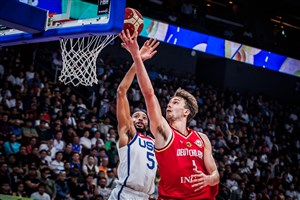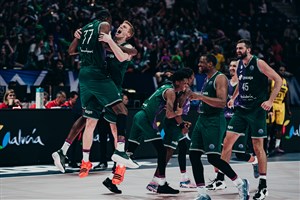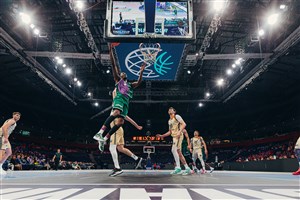
Canada looks to the future
SAN JUAN (William Rosario's Somewhere in the Americas) - It is true that Canadian basketball had a disappointing year in 2013 in terms of the continental championships, but I think it is important that we look to the future when we talk about their success.
Well…with the women the not-so-distant future. They are an elite bunch.
This week two recognizable faces to the Americas women’s basketball scene got a promotion when their names were called to the big leagues. Both Natalie Achonwa and Michelle Plouffe were drafted to the WNBA in the first round and for those taking notes, yes, that Canada team that basically dominated every game except the finals of the 2013 FIBA Americas Championship for Women in Xalapa is getting stronger.
A squad that already has the likes of Tamara Tatham and Kim Gaucher now brings back two young players that should have all the confidence in the world looking forward to the 2014 FIBA World Championship for Women to be played in Ankara.
Achonwa specifically if you take into consideration the kind of run she was going through for Notre Dame when an injury left her out of the NCAA Women’s Championship game. As noted in the university’s website, she started 33 games for the season, posting career-high averages in scoring (14.9 ppg.), field goal percentage (.611), assists (2.8 apg.) and blocked shots (1.2 bpg.), along with a team-high 7.7 rebounds per game and eight double-doubles. She also ranked among the top 15 in the ACC in scoring (15th), field goal percentage (2nd; also third in the nation and seventh on the Notre Dame single-season charts), rebounding (11th) and blocked shots (10th). But in the tournament she blossomed and averaged 23 points per game with everybody taking notice of her attributes.
Plouffe wasn’t far behind in terms of great numbers. In her senior season she averaged a double-double with 18 points and 10 rebounds per game. And she wasn’t even on the team that finished second in Xalapa last year.
That’s how deep the talent pool is for the Women’s basketball team. Last year they had three players averaging double figures and one of them, Kia Nurse, hasn’t even graduated high school. So they have more coming.
But it is important to point out the fact that it is no coincidence. This is a product of a National Federation that is doing things the right way and in an organized fashion.
They are in constant contact with their players and even get them together in the off-seasons to do workouts, and in the process play an active part in their development. Now, that my friends may seem like a logical thing to do for most of you, but I can assure you it is a rare thing and an almost non-existent modus operandi for National Federations in the Americas.
That kind of long-term mentality and planning is what I believe will make them a powerhouse squad in our continent in the coming years. And in this case I am talking about both the men and the women programs.
I just listed the women’s team deep talent pool, but what about the men?
There you are talking about already established NBA players like Tristan Thompson, Andrew Nicholson and Cory Joseph, the new crop that includes Kelly Olynyk and Anthony Bennett and now the future superstars in Andrew Wiggins and Tyler Ennis. That is one powerful lineup if you add shooters like Nik Stauskas, Brady Heslip and now veteran Andy Rautins. Phew, they will be something to watch for in future tournaments.
Of course there are detractors who point to Canada’s men basketball team lack of passion in the court and their sometimes nonchalant body language when struggling in big moments, as flaws that demonstrate that they will never win at the international level, specifically against teams like Argentina and Brasil who seem to be ready to die for a victory out there.
And they may be right. But those are the same people that say that Canada gets it easy by not having to qualify to the FIBA Americas Championships like the Central American and Caribbean teams do in the Centrobasket and the South American teams do in their championship.
I fundamentally disagree with that thought. I think they are looking at them the wrong way, because there is nothing that will make a team better and more prepared to face adversity than competition. And in my opinion Canada suffers from not having to play for their country every summer. Having your team play every two years is not enough. But thankfully 2017 is going to end that for them.
Now, with the new competition system Canada is going to be playing regularly, and not only that but hosting international high stakes games in their home turf.
And that will be exciting because Canada will get to show in continuous fashion the important work that they are doing for the future of the sport within the country.
I just keep coming back to the word future. It is a beautiful word to use when talking about the work of a National Federation. Canada Basketball is on the right path.
William Rosario
FIBA Americas
FIBA's columnists write on a wide range of topics relating to basketball that are of interest to them. The opinions they express are their own and in no way reflect those of FIBA.
FIBA takes no responsibility and gives no guarantees, warranties or representations, implied or otherwise, for the content or accuracy of the content and opinion expressed in the above article.

















